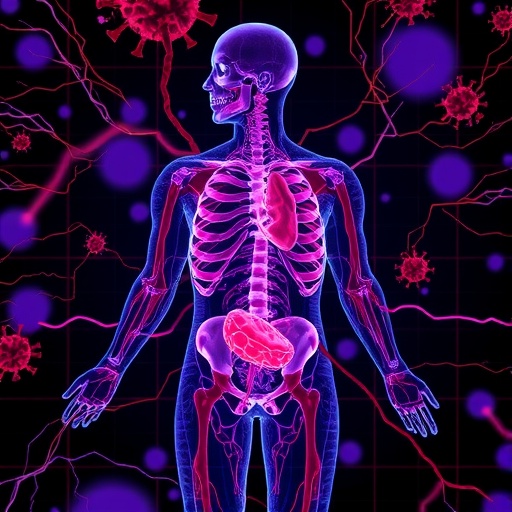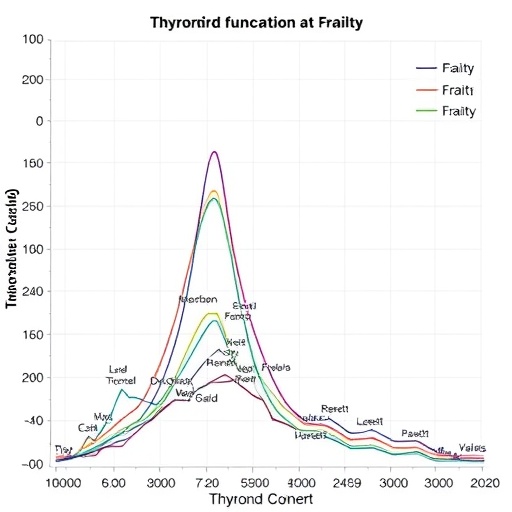
In the rapidly evolving landscape of biomedical research, the quest for viable organ models has become increasingly pressing. Traditional methods often fall short in accurately mimicking the complex interactions that take place within a living organism. However, a promising avenue has been illuminated by recent advances in ex vivo organ models. A comprehensive review, authored by Subbiahanadar Chelladurai et al., delves into the revolutionary potential of functional whole organ studies in their work published in the Journal of Artificial Organs. This research encapsulates a critical intersection of innovation and necessity in the biomedical field, highlighting the pivotal role that ex vivo models could play in understanding diseases and testing new therapies.
Ex vivo functional whole organ research involves the utilization of isolated organs that are perfused with blood or nutrient solutions to preserve their functionality outside of the body. This technique provides scientists with a dynamic platform for studying organ physiology and pathology under conditions that closely approximate in vivo environments. Importantly, these models allow for real-time observation of organ responses to various stimuli, including drug applications or pathological conditions. The implications of using such models for preclinical drug testing are immense, promising to reduce the reliance on animal models and potentially speeding up the drug discovery process.
One of the notable highlights from Chelladurai et al.’s review is the striking ability of ex vivo models to reconstruct complex organ systems. These models serve as an invaluable resource for understanding multi-organ interactions, reflecting the interconnectedness of bodily systems in ways that traditional in vitro models cannot achieve. For example, researchers can investigate the influence of liver metabolism on cardiac function or assess how renal clearance affects drug efficacy throughout the body. This comprehensive approach mirrors the realities of human physiology far more accurately than isolated cell studies.
The technology behind ex vivo organ studies has advanced significantly, utilizing sophisticated biosensors and imaging techniques to monitor organ health in real-time. With developments in microfluidics, researchers have been able to create closed-loop systems that closely mimic physiological conditions. This innovation is crucial; it permits sustained organ viability while exposing them to various experimental conditions. The potential for using these models to evaluate the toxicity of new compounds, biology of diseases, and efficacy of therapeutic strategies presents a promising frontier in medical research.
Despite the numerous advantages, the authors of the review articulate some challenges associated with ex vivo functional whole organ research. One significant hurdle is the preservation of organ viability over extended periods, which remains a focus of ongoing efforts in the field. Optimal perfusion techniques and solutions must be refined to enhance the longevity of organ functionality. As researchers continue to solve these challenges, the pathway for integrating ex vivo organ studies into standard biomedical practice becomes increasingly clear.
Furthermore, ethical considerations surrounding organ sourcing and usage remain pivotal. The use of organs from organ donors raises questions about the ethical implications of their employment in research. Chelladurai et al. suggest that developing robust guidelines and ethical frameworks surrounding these practices is essential. As such, stakeholder engagement—including the perspectives of donors, patients, and the public—should inform the development of policies that govern the use of ex vivo models.
A particularly exciting aspect of this research touches on personalized medicine, where ex vivo organ models could be tailored to an individual patient’s tissue. Such models could revolutionize the entire landscape of therapeutic approaches, allowing for drug testing to be conducted on personalized organ replicas developed from a patient’s own cells. This dovetails neatly with current trends towards precision medicine, which focus on individual treatment plans based on genetic, environmental, and lifestyle factors.
Moreover, the implications of ex vivo functional organ studies extend beyond drug testing, reaching into the realm of education and training. Medical students and professionals can benefit enormously from the ability to study these organ systems in a controlled environment, enhancing their understanding of physiological functions in a manner that traditional educational models simply cannot provide. This hands-on approach to learning fosters a deeper comprehension of complex biological processes, ensuring that future healthcare professionals are better prepared for clinical challenges.
Perhaps one of the most intriguing applications of functional whole organ research is its potential impact on regenerative medicine. Insights gained from ex vivo studies may accelerate the development of bioengineered organs and tissues. By understanding the principles that govern organ function in a controlled environment, researchers are better positioned to create artificial organs that can truly mimic their natural counterparts. This intersection of engineering and biology could lead to groundbreaking advances in transplantation and organ replacement therapies.
As the parallels between ex vivo organ studies and real-world clinical applications continue to unfold, it becomes evident that this research area is at the forefront of a biomedical revolution. The convergence of technology, ethical considerations, education, and personalized medicine represents an inflection point for the future of organ-based research and therapy. In a world where chronic diseases and organ failures are on the rise, the pursuit of innovative solutions through ex vivo models may very well offer hope to millions around the globe.
In conclusion, the meticulous exploration of functional whole organ models as highlighted in the review by Chelladurai et al. underscores a pivotal advancement in biomedical sciences. As we stand on the precipice of new horizons in medical research and treatment methodologies, the ongoing efforts to refine and implement these ex vivo organ systems will undoubtedly pave the way for significant breakthroughs in our understanding of human health and disease.
The pioneering work in ex vivo functional whole organ research heralds a new era in medicine that promises better therapeutic outcomes and enhanced understanding of complex diseases, ultimately providing a brighter future for patient care worldwide.
Subject of Research: Ex vivo functional whole organ in biomedical research
Article Title: Ex vivo functional whole organ in biomedical research: a review
Article References:
Subbiahanadar Chelladurai, K., Selvan Christyraj, J.D., Rajagopalan, K. et al. Ex vivo functional whole organ in biomedical research: a review.
J Artif Organs 28, 131–145 (2025). https://doi.org/10.1007/s10047-024-01478-4
Image Credits: AI Generated
DOI: https://doi.org/10.1007/s10047-024-01478-4
Keywords: Ex vivo; functional whole organ; biomedical research; organ models; personalized medicine; drug testing; regenerative medicine.
Tags: alternatives to animal modelsbiomedical research advancesex vivo organ modelsinnovative biomedical solutionsJournal of Artificial Organs researchorgan interaction studiesorgan physiology and pathologyperfusion techniques in researchpreclinical drug testing methodsreal-time organ observation techniquestherapeutic testing in organ modelswhole organ function research




